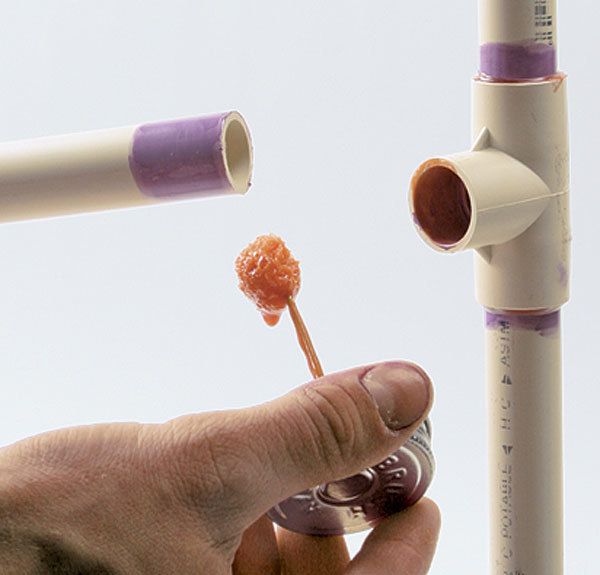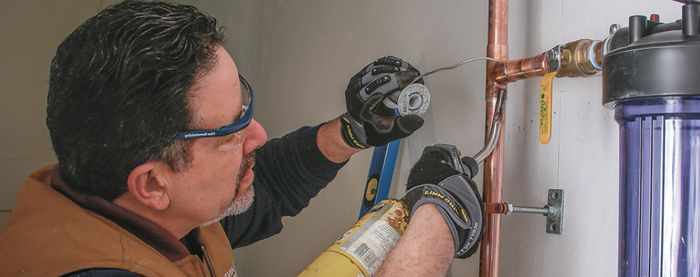Choose the Right Plumbing Cement
Match the glue to the material for ABS, PVC, and CPVC pipe.

Residential water can be routed through a variety of different pipes, and those pipes are joined in different ways. Copper pipes are joined to their fittings with solder, steel pipes rely on threaded connections, and PEX tubing has a wide variety of crimp, expansion, and compression joints. But ABS, PVC, and CPVC pipes rely on solvent-weld cements to create a watertight bond between components. Your choice of cement will be dictated by the type of pipe being joined, your local inspector’s preferences, and the environmental conditions during assembly.
Material
They don’t appear much different at a quick glance, but ABS, PVC, and CPVC pipes are dissimilar animals, chemically speaking. Because these plumbing connections rely on a solvent-weld joint—where the plastic melts together to form a connection stronger than the pipe itself—those differences are extremely important.
According to Oatey Technical Service, PVC and CPVC cements can be too aggressive on ABS pipe and fittings, especially foam core. PVC solvent cement has a temperature rating of 140°F when cured and cannot be used on CPVC pipe and fittings, which are approved for 180°F continuous operating temperature. These dangers may not be immediately evident, but they can lead to major problems with joints over the long haul. Multipurpose cement would seem an attractive universal choice, but it is not accepted by plumbing code, and therefore, its uses are limited.
Color
The color of the necessary primers and cements allows the building inspector to verify visually that the appropriate product was used for each installation. ABS cement is typically black, but it can be milky white. PVC cement is clear, gray, or blue (for use without a primer in many nonpressure installations). CPVC cement is either yellow or orange, depending on the brand of pipe.
The inspector also will know to look for purple primer on all PVC and CPVC joints (no primer is necessary for ABS), though clear primer can be used in areas where it is approved by code or on jobs not subject to inspection.
Green-colored transition cement must be used when ABS is being connected to PVC, a common situation when joining household drain, waste, and vent systems to the outgoing city sewer lines at the street.
Consistency
Cements are available in three viscosities, and the choice is directly related to the diameter of the pipe being joined. Regular cement is the thinnest and is intended for pipe up to 2 in. in dia. Medium-duty cement is a bit thicker and is approved for pipes up to 6 in. in dia. Heavy-duty cement is also available for pipes up to 12 in. in dia.
 |
 |
 |
 |
To view the entire article, please click the View PDF button below:
Fine Homebuilding Recommended Products
Fine Homebuilding receives a commission for items purchased through links on this site, including Amazon Associates and other affiliate advertising programs.

Handy Heat Gun

8067 All-Weather Flashing Tape

Affordable IR Camera






